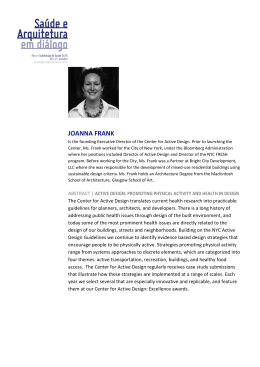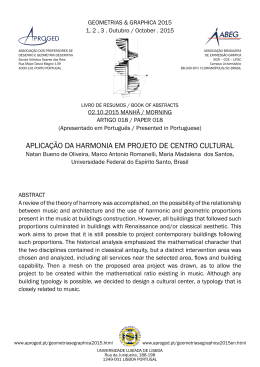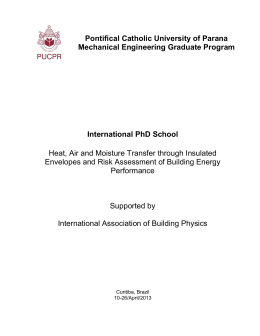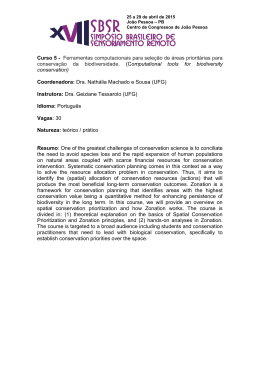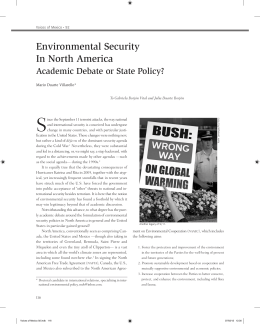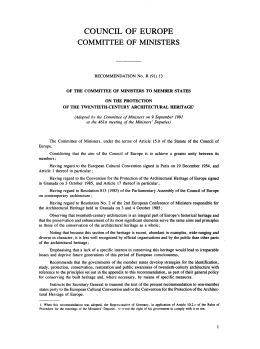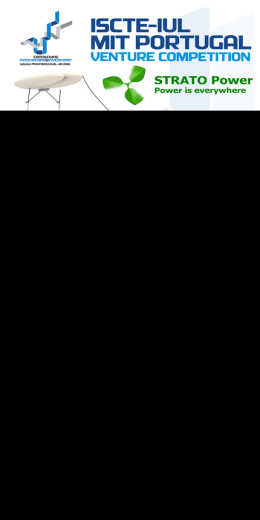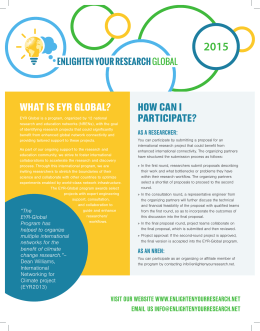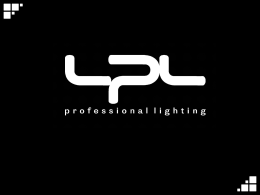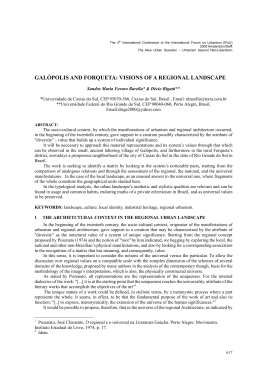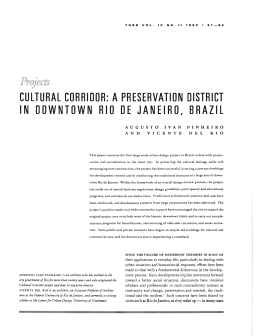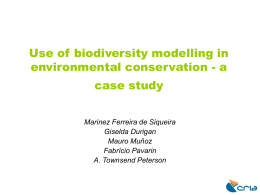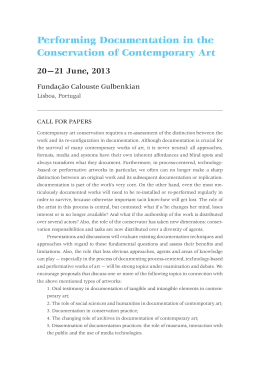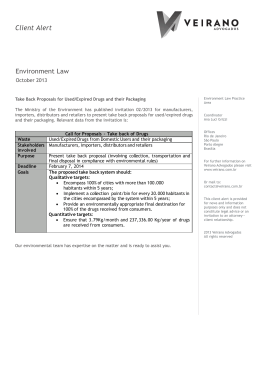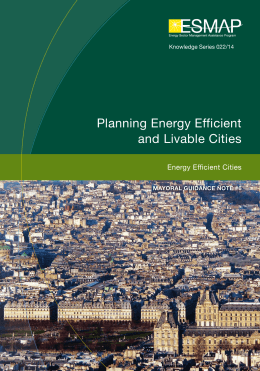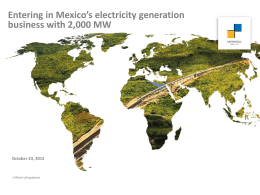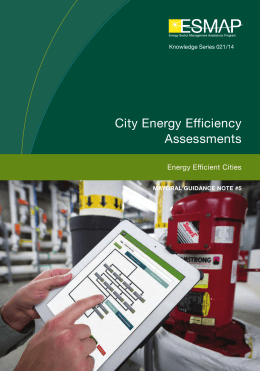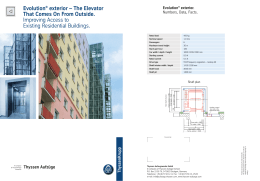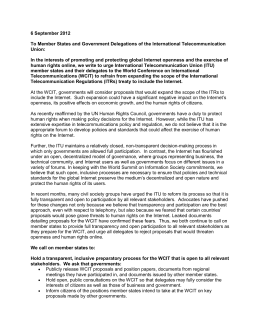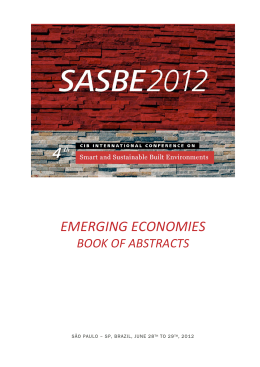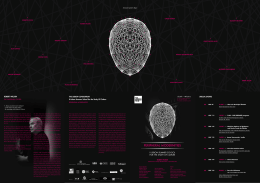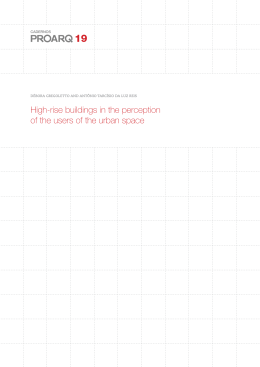do.co mo.mo_mexico city 2010 11th International docomomo conference Living in the Urban Modernity Mexico City, August 19-27, 2010. The rapid growth of urban areas from cities to metropolis in the twentieth century created a favorable environment for establishing a discourse on modern architecture. The advancement of technology and the introduction of new materials, which brought about new forms of expression, were not the only triggers for transformation. Concerns for wellbeing, such as hygiene, education, health, leisure and the right to work were also fundamental in shaping buildings and cities, leading to innovative architectural proposals within the framework of a diverse urban structure. [email protected] http://www.docomomo2010.unam.mx Mexico City offers a clear example of life in a metropolis. During the past century its limits expanded in such a way it became one of the largest urban conglomerations in the world and served as a fertile field for the development of modern architectural typologies. For the 2010 Docomomo Conference, Docomomo Mexico proposes to analyze the different elements that transformed the city and its architecture. The conference program will include the following themes. 1. Modern Living By the end of the nineteenth and beginning of the twentieth centuries, overcrowded industrial towns which were the end product of migration from rural to urban areas brought housing to the forefront of the modern architectural agenda. The need to provide dignified and hygienic solutions to the emerging proletariat as well as to a cultured bourgeoisie resulted in the formulation of an architecture deprived of ornament, detached in many ways from past tradition, and inspired by technological development. Simplicity and pure geometry became the distinctive features of the house; standardization and mass production its tools. Debates on the definition of a minimum living unit were held and exhibitions showed the public numerous possibilities and advantages based on designs which accommodated modern ways of life. New approaches to housing were developed after the end of World War II as a part of urban renewal or suburban expansion programs, as echoed in the “Good Life Modernism” slogan introduced at the MoMA, which became an important factor in modernizing and suburbanizing the American city. Instituto de Investigaciones Estéticas. UNAM Circuito Mario de la Cueva s/n, C.U. Coyoacán, México, D.F. C.P. 04510 Teléfono: (55) 5665-2465 / Fax: (55) 5665-4740 do.co mo.mo_mexico city 2010 The aim of this theme is to discuss the relevance of housing in the configuration of modern society. Selfcontained houses and multi-family units, working class developments and bourgeois houses were all part of the same enterprise. Case-study analysis and archival documentation, conservation proposals, philosophical conceptions, and the political implications of housing, including formal and functional responses to specific programs are some of the topics to be considered. 2. Civic and Social Infrastructure With the expansion of cities, technological advancement, and the transformation of the way of life, infrastructure requirements became essential to meet the demands of society. Planning and the implementation of social infrastructure became banners for wider national development policies and the resulting buildings and complexes acquired a strong urban presence. Governments expanded their network of public institutions from legislative palaces, embassies and town-halls to entire districts where political power was concentrated. The private sector also generated new architectural typologies. Health, educational, cultural and recreational facilities proliferated in the modern city and became pivots for further growth. Numerous competitions and specific commissions were drawn to solve new architectural programs, transforming isolated initiatives into large multi-functional complexes. The relevance of civic and social infrastructures as products of modernity can only be appraised through careful analysis of the distinct circumstances in which they were completed, including their socio-political and economical framework, the ideology present in their designs, and the urban significance of their architectural contributions, both for large scale urban compounds and smaller particular buildings. Submissions for this theme should consider such aspects, as well as proposals for their conservation, rehabilitation or recycling. 3. The Modern City The early decades of the twentieth century witnessed intense theoretical debates regarding the future of the built environment. 'Ideal' cities foresaw the predominance of technological progress as a guiding principle for new design vocabulary. Cities also needed to accommodate a growing number of inhabitants and create proper conditions for their wellbeing. Analysis of urban densities, functional distribution and housing were also topics of the interwar period; from partial interventions in existing areas to the completion of town projects, the modern city began to take shape. The aftermath of World War II raised questions concerning the validity of previous solutions for urban growth, which were deemed impersonal and standardized. New alternatives for the reconstruction of devastated zones became increasingly inspired on the principles of the Modern Movement. This section aims to reevaluate the achievements and failures of urban modernities around the globe from various disciplinary perspectives, including architecture and planning, urban studies, conservation, and social studies. Papers dealing with specific examples of planning or implementation of modern cities and neighborhoods, their response to the community, the political implications of urbanism, and the preservation and future of existing modern urban developments will be considered. do.co mo.mo_ mexico city 2010 4. Technology for a Modern Habitat Based on the technological advances of the nineteenth century, the modern movement broke away from traditional concepts of space and planning, and introduced new building techniques and materials to achieve architecture's new role in social reform. Technology was not only the means to achieve practical solutions but an intrinsic component of the modern ideology. With the global translation of the modern movement, local conditions of climate, topography, and material resources resulted in specific local responses. These local manifestations of modernism were many and diverse. The very essence of the modern movement deeply challenges the possibilities of its restoration: not only was the intended lifespan of modern buildings often abridged by the technical limitations of new materials and construction methods, but modernity's call for progress made the durability of buildings a relative concept altogether. Therefore, conservation approaches must deal with the physical deterioration of modern buildings while assessing the extent to which replacement materials may adopt or retain the symbolic qualities originally associated to these buildings. Characteristics of the modern movement, such as technical innovation and functionalism, have created some unique conservation challenges, both philosophical and technical, which have been central to Docomomo discussion for many years now. This session seeks papers dealing with the philosophical and practical aspects specific to the conservation of modern movement buildings and structures. Of interest are new repair approaches or new technologies including the adaptation of modern buildings to meet new standards of environmental performance being developed to meet sustainability targets. 5. The University City Throughout the twentieth century, the development of facilities for higher education became both an important factor in the political agenda of many governments and a cause for urban development. From specific interventions in traditional campuses to entire university cities, architects experimented with the latest thinking on planning, technological advancement, materials and forms. New ideals for planning and architecture welcomed the integration of major artworks; sculpture, mosaics, murals and landscaping, which provided each campus with its own distinct identity. University buildings became statements of progress, cultural growth and social interaction, and later, they were also the silent witnesses of the social transformation of the sixties. The campus of the National University of Mexico (UNAM) will be the venue for the XI DOCOMOMO International Conference and as such the significance of modern universities around the world will be explored as a new and distinct urban model, developing an artistic and architectural language which represents the social and political ideals of the time and the role of education in social reform. This section will discuss topics related to the modern university campus and its political, social, planning and architectural development. Papers exploring the challenges of conserving the integrity of these large-scale complexes and their rich repository of buildings, artworks and designed landscapes, or dealing with individual aspects of these issues are invited. CALL FOR PAPERS AND CASE STUDIES Docomomo invites architects, researchers, historians and other parties involved in the process of preservation, conservation, renovation or transformation of modern towns and buildings to investigate on the manifold challenges and dilemmas posed by living in the urban modernity. Those interested in presenting a paper or case study should submit an abstract before 15 September 2009. Original papers are invited for submission under the following sub-themes: !· Modern Living !· Technology for a Modern Habitat !· Civic and Social Infrastructure !· The University City !· The Modern City ABSTRACTS The abstract should be prepared according to the template given at the website. The abstracts must be submitted electronically to [email protected] not later than 15 September 2009. The official language of the conference is English. Only one abstract per person will be accepted. All respondents will be notified on whether their abstract is accepted in November 2009. CALL FOR ISSUES The Round-table Sessions are introduced as a format for sessions of small groups (15-20) of active participants for discussion and debate. They will have participants from all fields that are represented at the conference. PROPOSALS The proposals should be prepared according to the template given at the website. The proposal must be submitted electronically to [email protected] not later than 15 September 2009. In November 2009 all respondents will be notified on whether their proposal will be a Round-Table Session Topic. VENUES The Conference will be held at the Faculty of Architecture of the National University, UNAM, declared World Heritage by UNESCO in June 2007. The previous student workshop will take place at the Xochimilco Campus of the Metropolitan University, UAM. ORGANIZING COMMITTEE Diseño gráfico: Celia Facio DOCOMOMO MEXICO Presidents: Louise Noelle Gras and Sara Topelson de Grinberg Alejandro Aguilera Lourdes Cruz Raquel Franklin Gabriela Lee Alejandro Ochoa Ivan San Martín Rodolfo Santa María DOCOMOMO INTERNATIONAL Maristella Casciato Ana Tostoes Emilie d´Orgeix Anne-Laure Guillet SCIENTIFIC COMMITTEE: DATES TO REMEMBER: May 2009: September 15, 2009: November 10, 2009: March 1st., 2010: April 10, 2010: August 19-24, 2010: August 24-27, 2010: August 28-29, 2010: Call for papers. Deadline for abstracts Notification of acceptance Deadline first version full paper Deadline final version full paper Workshop Conference Post Conference Tours e-mail: [email protected] http://www.docomomo2010.unam.mx Janneke Bierman (Netherlands) Carlos Eduardo Comas (Brazil) Wessel de Jonge (Netherlands) Natalia Dushkina (Russia) Carlos García Vázquez (Spain) Miles Glendinning (Scotland) Susan Macdonald (Australia) Enrique Madia (USA) Rahul J. Mehrotra (India) Raúl Monterroso (Guatemala) Henrieta Moravciková (Slovakia) Gustavo Luis Moré (Dominican Republic) Alona Nitzan-Shiftan (Israel) Kyle Normandin (USA) Theodore H. M. Prudon (USA) Eduardo Luis Rodríguez (Cuba) Dennis Sharp (UK) Horacio Torrent (Chile) Yoshiyuki Yamana (Japan)
Download
